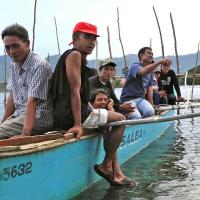February 14, 2025
The January 2025 California Wildfires are Fully Contained, But Their Impacts on the Ocean are Not
BY: Anna Baxter
In January 2025, a series of devastating wildfires hit Southern California. Lives were lost. Homes and businesses were destroyed. Families were displaced. The scale of the devastation is staggering. But the damage doesn’t stop at the shoreline.
This week, as Southern Californians are deluged with torrential downpours, harmful pollutants and toxic runoff from the fires could wash into local waters and put both marine life and local communities at risk.
An Ecosystem at Risk
The situation that continues to unfold off Southern California is a reminder of just how important the California coastline is. Fishing, tourism, and recreation alone provide nearly 600,000 jobs and contribute roughly $42.3 billion to the state’s economy.
Unlike the rest of the U.S. West Coast, this complex seascape marries warm subtropical waters with cold nutrient-rich waters that upwell from the deep. When combined, it makes this region an epicenter of biodiversity often referred to as the “Blue Serengeti.”
These waters include migratory routes and feeding destinations for endangered humpback and blue whales; nurseries for great white sharks; breeding and foraging habitats for California sea lions, brown pelicans, and giant seabass; gardens of colorful cold-water corals; and dense canopies of giant kelp forests.
When the fires broke out, researchers from UC San Diego’s Scripps Institution of Oceanography and NOAA Fisheries’ Southwest Fisheries Science Center were on the water. What did they see? Ash and debris coating the ocean surface as far as 100 miles offshore.
As LA County public health officials warn people to stay away from fire debris and heavy ash, the species that call these waters home cannot escape these conditions.
How Could This Affect Marine Life?
Smoke and ash from wildfires are linked to a number of serious health problems in humans including heart disease, asthma, certain types of cancer, and dementia. But we know very little about the potential effects of wildfire runoff on marine life.
Past studies have found that ash from forest fires can sometimes boost the growth of certain phytoplankton, microscopic algae at the base of aquatic food webs. This could trigger harmful algal blooms, creating low oxygen dead zones where marine life cannot survive. Plastics, heavy metals, asbestos, and more burned in the Los Angeles fires, bringing potentially more impacts on the environment and marine life.
Here are some concerns scientists have flagged so far:
- Impacts on the food web: California anchovies were spawning as the wildfires began. Anchovies are a top food source for humpback whales, dolphins, brown pelicans, sea lions, many fish species, and more. Rasmus Swalethorp, an oceanographer with Scripps, told Bloomberg, that toxins from wildfire runoff “could impede the development of these eggs and they may turn out to be non-viable.”
- Potential habitat loss: Mud and debris from the wildfires could smother important kelp forests. Dan Pondella, a professor of biology at Occidental College and research director at the Southern California Marine Institute told LAist that reduced light to kelp forests would limit photosynthesis in plant and algal growth and reefs could become completely buried in ash.
What More Can We Learn?
While scientists are concerned about potential health and environmental risks tied to wildfire runoff, there is still a lot to learn. Local organizations like our partners at Heal the Bay are actively studying these impacts and what they mean for local communities and wildlife.
Heal the Bay’s Annelisa Moe said, “Wildfire impacts extend far beyond the shoreline. The ash, debris, and toxic chemicals from these devastating fires are flowing into our rivers and reaching the ocean, posing serious risks to marine life and public health.”

Heal the Bay’s team collected water samples before and after rains in January to test for bacteria, long-lasting toxic chemicals, heavy metals, and more. Moe explained, “during the ‘first flush’ rain event in January, our team at Heal the Bay ventured to the beaches to monitor water quality and assess the full extent of this pollution. We tested for turbidity, bacteria, heavy metals, PAHs, BCBs, PFAS, and benzene.”
This analysis will help inform our understanding of the effects of post-fire stormwater runoff on local water quality, marine ecosystems, and public health. “The more we uncover, the better equipped we become to protect our coastal waters and communities from these escalating climate-driven threats,” concluded Moe.
Understanding these impacts will help us identify and advocate for solutions. As additional research becomes available, we will share more about what this means for our oceans and how you can help. In the meantime, to learn more about local beach closures, water quality reports, and findings from ongoing research, please visit HealTheBay.org.
Oceana’s Impact
For more than 20 years, Oceana has campaigned to protect the waters off Southern California and around the world. In just the last year, Oceana and its allies have protected U.S. coastlines (including off Southern California) from new offshore drilling, convinced Amazon to remove plastic air pillows from its delivery packaging globally, helped to save whales and turtles from deadly entanglements in California’s waters, won a lawsuit to force the government to rebuild the sardine population, and so much more.
Your support powers these campaigns. Together, we can protect the world’s oceans.



